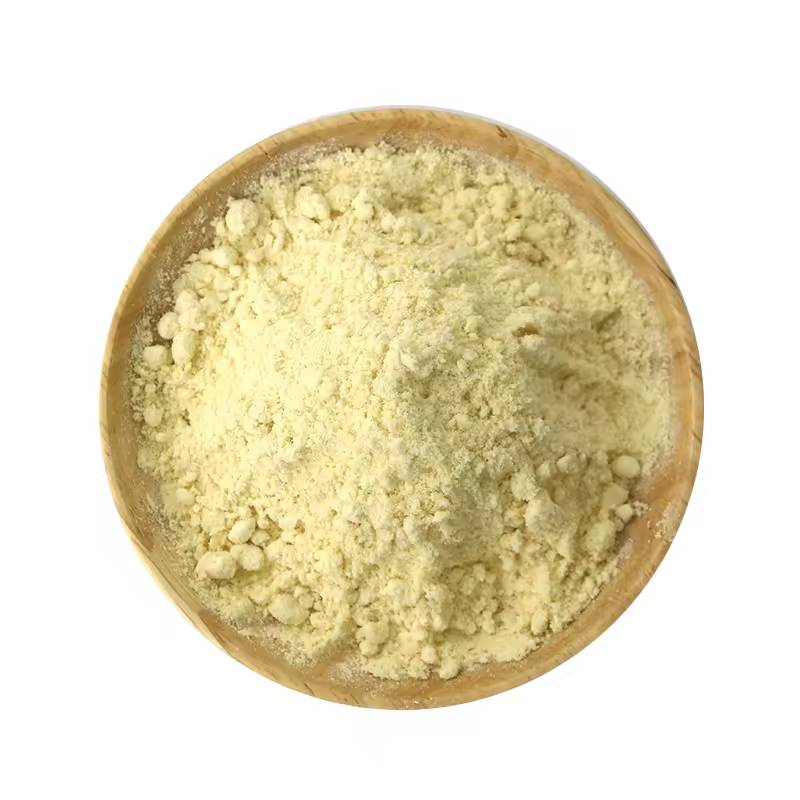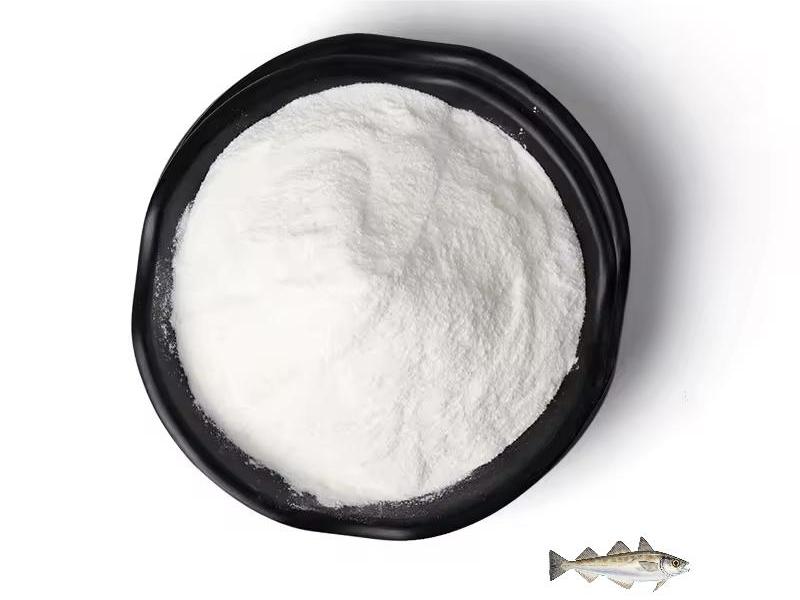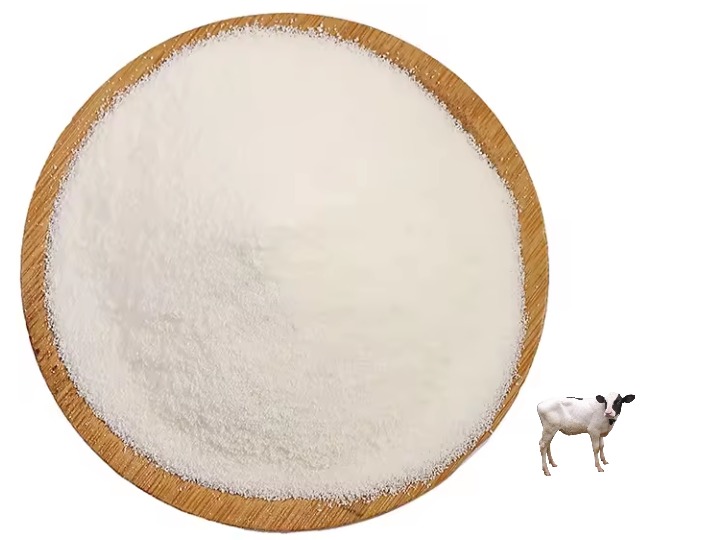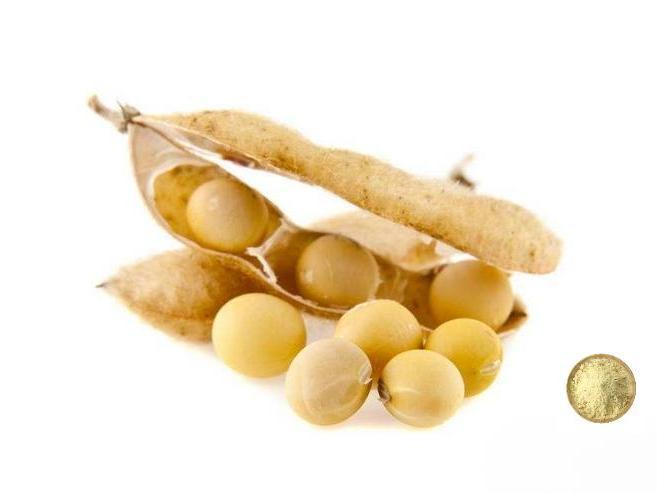70% de lécithine de soja en poudre
Nom Latin :Glycine max (Linn.) Merr:
CAS nr.:8002-43-5
Spécification :70%
Méthode d’essai :HPLC
Apparence: poudre jaune clair
Résidu de Pesticide: conforme à la norme (ce) No 396/2005
- Description Description
- Fiche technique
- Certificat de formation
-
Qu’est-ce que la lécithine de soja à 70% en poudre?
Soya lecithin is a phospholipid extracted from soybeans and is rich in unsaturated fatty acids and lecithin. It appears as a light yellow to brown transparent or translucent viscous liquid or white to light brown powder or granules. Soy lecithin has a strong emulsifying effect, lecithin contains a large number of unsaturated fatty acids, easily affected by light, air, and temperature and deterioration, resulting in the color from white to yellow, and finally brown, soy lecithin can form liquid crystals when heated and damp. Soy lecithin powder is a very good natural emulsifier and surfactant, non-toxic, non-irritant, easy to degrade, and has a variety of effects, is widely used in food, medicine, cosmetics, and feed processing.
La technologie Printemps vert fournit 70% de poudre de lécithine de soja avec une poudre uniforme et fine, des performances stables, une bonne solubilité et une faible teneur en humidité, ce qui peut prolonger la période de stockage.
Green Spring Technology est une société leader de technologie d’extrait d’usine en Chine. Elle organise sa production selon les normes de qualité ISO, HACCP et autres, et ses produits sont conformes aux normes internationales telles que la pharmacopée européenne, la pharmacopée japonaise et la pharmacopée américaine. Il a mis en place un système de traçabilité parfait et tous les produits sont traçables. Printemps vert A obtenu de nombreuses certifications telles que Halal, casher, COSMOS, BRC, IFS, FDA, ISO9001, ISO22000 et ainsi de suite.
Spécification:
Nom du produit
Lécithine de soja en poudre
Nom Latin
Glycine max (Linn.) Merr:
CAS non.
Numéro de téléphone: + 33 (0) 2 43-5 43-5
Source:
Le soja
Ingrédients actifs
Phosphatidylcholine
spécification
70%
Méthode d’essai
HPLC/HPLC
apparence
Poudre jaune clair
Résidus de pesticides
Conforme à la norme (ce) n ° 396/2005
Règlement:
Il est conforme à la réglementation de l’ue.
Vous cherchez un devis?Benefits:
Delaying Aging
Cell membranes are mainly composed of lecithin, and adequate lecithin intake can repair damaged cell membranes, improve cell membrane function, soften and rejuvenate cell membranes, and increase cell activity. Soy lecithin can repair damaged cell membranes, increase the unsaturation of fatty acids in cell membranes, and soften and rejuvenate them, thus improving the body's metabolism, self-healing ability, and regeneration of body tissues, thus slowing down the aging of the human body.
Protecting the Liver
Heavy drinking or excessive nutrition will increase the burden on liver cells and reduce the liver's ability to synthesize phospholipids. When there is insufficient phosphatidylcholine in the body, it will lead to a large amount of fat accumulation in the liver, forming a fatty liver, destroying liver cells, reducing liver function, causing cirrhosis, and even liver cancer. Scientific evidence: soy lecithin can enhance the metabolism of liver cell substances, promote fat degradation, protect the liver, and prevent the occurrence of fatty liver and other diseases.
Lowering Blood Lipids
Lecithin can emulsify and decompose fats and oils and can emulsify cholesterol and fat adhering to blood vessel walls into microparticles so that they can be dissolved in the blood and transported back to the liver for metabolism. It softens blood vessels, improves serum lipids, removes peroxides, and reduces cholesterol and fat content in the blood, thus lowering blood viscosity, improving blood circulation, and reducing the retention time of fat in blood vessels. As a result, the nutrient-rich, oxygenated blood flows freely to the brain, heart, and other organs.
The Department of Food and Nutrition of Keio University School of Medicine in Japan has conducted clinical experiments and concluded that taking lecithin, it can effectively reduce excessive blood fat and cholesterol, and thus prevent and control coronary heart disease, hypertension, myocardial infarction, cerebral thrombosis, cerebral haemorrhage, arteriosclerosis, and other diseases.
Good for the Brain
The content of lecithin in the nerve cells of the brain accounts for about 17% to 20% of its mass. Choline" is the basic component of soy lecithin, and an adequate supply of lecithin ensures that sufficient "choline" is synthesized with "acetyl" in the body to form "acetylcholine". Acetylcholine". Acetylcholine excites the nerve cells of the brain, so the more acetylcholine there is in the brain, the faster the formation of memory and thinking. Lecithin can increase the concentration of acetylcholine in the brain, which can help people maintain abundant energy and good memory.
Applications:
In the Food Field:
Since soy lecithin can increase the decomposition activity of peroxides and hydrogen peroxide in fats and oils, its antioxidant effect is widely used in the production of fats and oils. Soya lecithin is used as an emulsifier in W/O emulsions. As it is sensitive to ionic environments, it is usually combined with other emulsifiers and stabilizers to emulsify. Soya lecithin as a foaming agent is more used in fried food. It not only can foam for a longer period but also prevents the food from sticking and scorching. In the production of fermented foods, soy lecithin can improve the fermentation speed. This is mainly because it can significantly increase the activity of yeast and lactococcus.
In Industrial field:
Adding soy lecithin to detergent can reduce the surface tension of the solution, increase the wetting ability, and improve the washing effect of the detergent. Adding soy lecithin to natural rubber, synthetic rubber, hard rubber, and recycled rubber has the function of softening, dispersing, promoting vulcanization, and preventing aging. Soy lecithin has many uses in textile, printing, and dyeing, such as emulsifier, penetrating agent, diffusing agent, antioxidant, etc. It can also be used in textile washing, degumming, mercerizing, dyeing, and other processes.
-
Télécharger le document
70% lécithine de soja en poudre COA
-
Télécharger le document
Cosmos 2023
Télécharger le documentHalal 2023
Télécharger le documentCasher 2023


 Anglais
Anglais français
français espagnol
espagnol russe
russe coréen
coréen japonais
japonais













